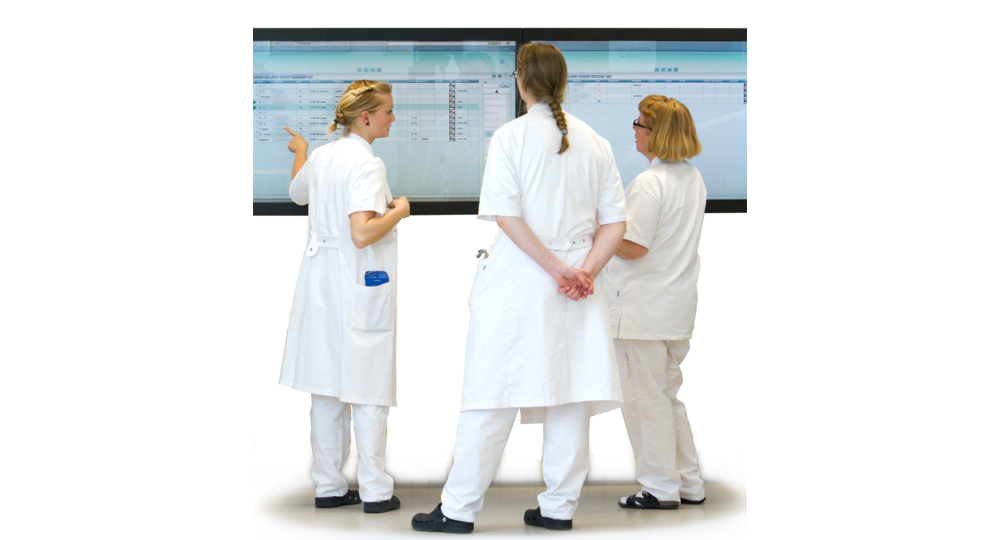Technologies
Discover, Connect & Collaborate at TECHINNOVATION 2021
Connecting Hospital and Healthcare Workers to Real Time Data

Technology Overview
Scandinavia’s favorite digital hospital operating system uses pervasive integration and a low-code user interface to streamline and orchestrate workflows throughout a hospital, campus, or region. Now used in 58 hospitals in seven countries across three continents to streamline workflows, orchestrate patient journeys and facilitate the necessary, underlying real-time collaboration to enhance every-day life for employees, patients, and relatives. Remove bottlenecks from hospital workflows and enable staff to focus on the patient, without wasting time and energy chasing required resources, information, or supplies.
Crafted over 20 years by nurses and doctors to create value on top of the existing capabilities & investment in legacy software and hardware ‘sources of truth’ streaming from your hospital’s existing heavyweight IT. We collect and organize the real time data from the: electronic medical record, nurse call, call manager/alerting, pathology, building management, lifts, robots, bio-med, location systems and 250 more systems found in hospitals. With this data in our workflow orchestration engine, using our low code administrator module, each hospital can independently adapt to rapidly changing conditions as needed. Our Lightweight middleware, apps and user portals are mobile friendly and arrive in formats ranging from wearables to large wall mounted touchscreens.
Technology Features, Specifications and Advantages
We have crafted a solution for real-time hospital and clinic patient flow management and care pathway orchestration. Developed as a scalable enterprise solution, we support patient pathways at the operational level and provide management tools for overall operation automation and performance interaction.
Our integration engine is an open, low-code platform, supporting bi-directional integrations to hospital and healthcare systems. Connections are via open, industry-standard interfaces like HL7 v2.x, HL7 v3.x or HL7 FHIR for hospital information systems. We uniquely connect to other system domains particular to hospitals including staff rosters, comms platforms, nurse call and alarms, building systems, lifts, robots, bio-med, and wearables. We also provide an open interface for 3rd party systems to connect to our platform.
All clinical & nonclinical staff get their own role-based portal for the presentation and handling of any information and alerts required to do their job. Hospitals and clinics also use our configurable, browser-based, real-time dashboards for tracking flow metrics at a level relevant to that person’s role – from a single patient or ward, across unit or an entire regional group of hospitals. As our user portals are browser based, they present on any screen from mobiles to large format touchscreens which are particularly useful during ward shift handovers.
Potential Applications
Applications for hospitals and groups of hospitals include :
- Smart hospitals with integrated IoT sensors
- Optimized patient care, via tools that maximize the time spent with patients
- Improved patient safety and quality of care services
- Silent hospital - reducing noise levels and increase peace - no more alarm fatigue
- More Effective communication and collaboration between staff members
- Patient Empowerment during their care journey
- Improve efficiency of registration and payments
- Automated bed management, and cleaning, and patient transport workflows
- Improved patient flow from the Emergency room into wards
- Digital Front Door for Outpatients with check-in, journey and payment all on mobile.
Customer Benefit
External studies and customer evaluations of our software solutions used in live hospitals has validated specific benefits and improved experiences.
Some examples :
- Bed turnaround time between patient discharge and room readiness reduced by 50% (40 min. reduced to 20 min).
- Nurses have more time available to spend directly with patients in person, an average of 44 minutes more time with patients per shift.
- Lab results visible to appropriate care delivery staff 2 hours faster.
- Smaller outpatient waiting room footprint and less receptionists.
- 5 % reduction in overlooked tasks among orderly staff.
- 56% uptake in the first week for the outpatient mobile self-check-in app.
- With less time chasing data, people and stuff, nurses reduce their steps per shift by up to half.
- Silent hospital creates a better working environment with reduced stress and sick leave.